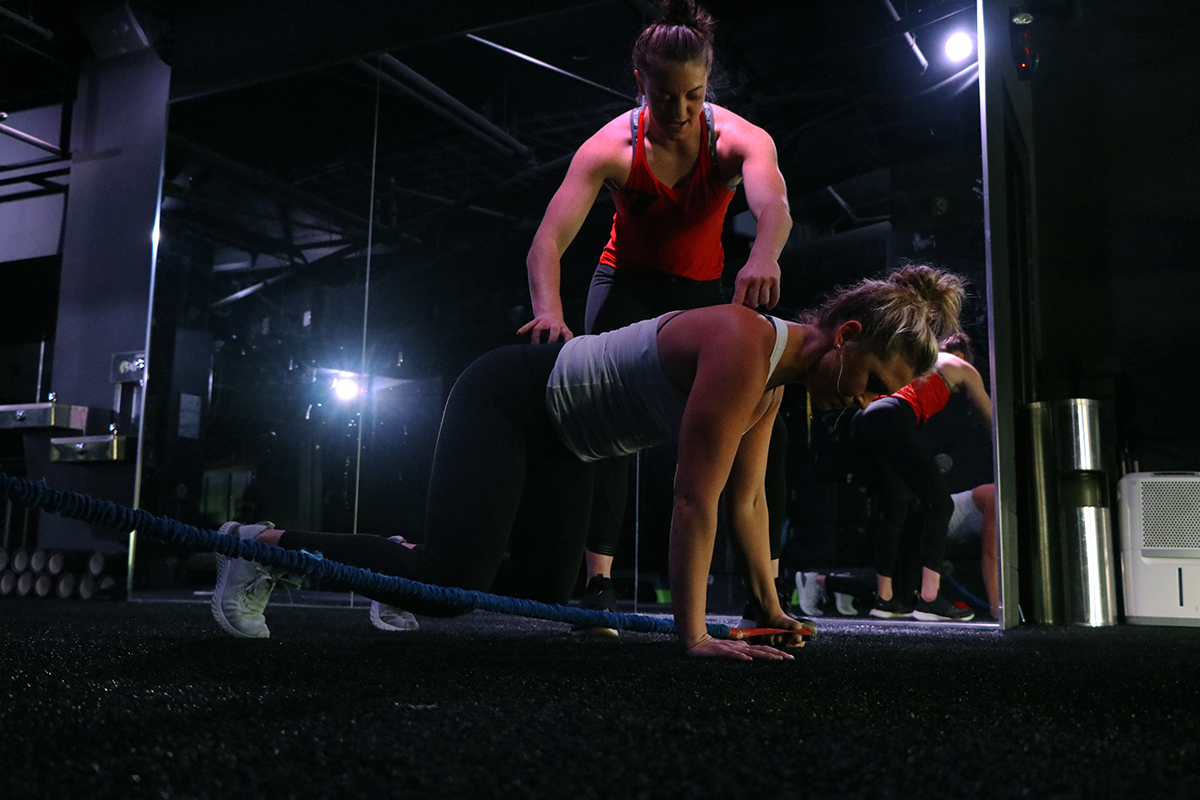Why Seven? Why You Can’t Skip Back Day

This is the first of a four part series called Why Seven—explaining why we hit seven different muscle groups and why you won’t see results if you purposely skip one or two of them.
You take a look at the schedule, planning to Cut five days this week. You book Legs, Ass, and Heart in Mindbody—your “must have” classes for the week. You’re craving some upper body, and choose Chest/Abs and Arms/Legs for your last two classes.
You do this week over week, planning your schedule around your favorite “days.” You go weeks skipping Back and Hammys—because who needs them anyway—fixated on achieving six-pack abs or chiseled arms.
We know you do this.
Don’t think we don’t notice. You want to work the muscles you flex—the muscles you see in the mirror. You’ll work your quads, chest, and abs to the point of exhaustion, ignoring other muscles and forgetting that we’re called Cut SEVEN for a reason. You are doing your body a complete disservice by following this pattern, creating muscle imbalances and halting your progress.
Why You Can’t Skip Back Day: Balance, Function, and Aesthetics
When you focus on your core but ignore the mid, upper, and lower back, you build up the muscles on the front side of the body. And while you may think this looks good in your reflection, let’s take a closer look at what’s actually happening.

Balance: You Can’t Build a Strong Core By Neglecting Your Back Muscles
If you overwork your abs, but lack the back strength to support those muscles, what does that do to your body? It pulls your entire body forward, as your core lacks an opposing force.
“To make any muscle stronger,” explains Chris, “There has to be a balance. Whatever force you expect to push away, you have to be able to accept that force back.” This is pure physics. For every ounce of pressure applied in one direction, the same amount of pressure must be applied in the opposite.
Back pain is rooted within an imbalance between core and back strength. If you’re doing far more crunches and planks than bird dogs and supermans, the bulk of your strength will shift to the front half of your body.
Aesthetics: Why You Can Never Seem to Stand Up Straight
An imbalance between your back, chest, and shoulder muscles will cause your shoulders to roll forward and back to hunch. Improper posture is directly correlated to a lack of back training, as it combats the forward neck and shoulder roll caused by our desks and phones. And for those of you who implemented extra core training for vanity purposes, ask yourself this: Do slouched shoulders look good?
Slumping forward is not attractive, and this isn’t just our opinion. Studies show that sitting up straight and having good posture doesn’t just look good to others—it makes us feel good. Standing upright, the way humans were always meant to do, helps us project confidence to others and feel confident in ourselves.
Let’s face it—confidence is sexy. So if you’re constantly checking yourself in the mirror or in photos wondering why your shoulders are slumped forward, maybe it’s time to rethink your no-Back-Day training.
Function: Your Back is What Holds You Up
Your core is what holds your body up. In order for your body to support the constant pounding of training, you need back muscles to support your core. These two equal and opposing muscles groups allow your body to stand in a straight line.
Let’s break this down:
- If your shoulders are slumped forward, a lat pull-down will roll those shoulders back to help you look more confident.
- If your mid back is weak, it will put undue stress on your low back. By doing bent over rows, you strengthen the stabilizer muscles in your back. These muscles pull your spine straight, relieving low back tension.
- If your low back is killing you, doing supermans can help increase the function of your entire body, alleviating the pressure in your hip flexors.
But you won’t get any of these exercises if you keep skipping Back Day.
Your body is a complete system, and overloading one area will injure another
If you want to get stronger in certain areas, you have to strengthen the muscles that counterbalance them. Over the next month, we’re going to explain why you need to work your hammys as much as your quads, your chest as much as your back, and your ass as much as your low back and core.
You are hindering your results if you think you can overload certain muscles while ignoring others. So if you’re obsessed with abs, you better start obsessing over the back muscles you can’t see.